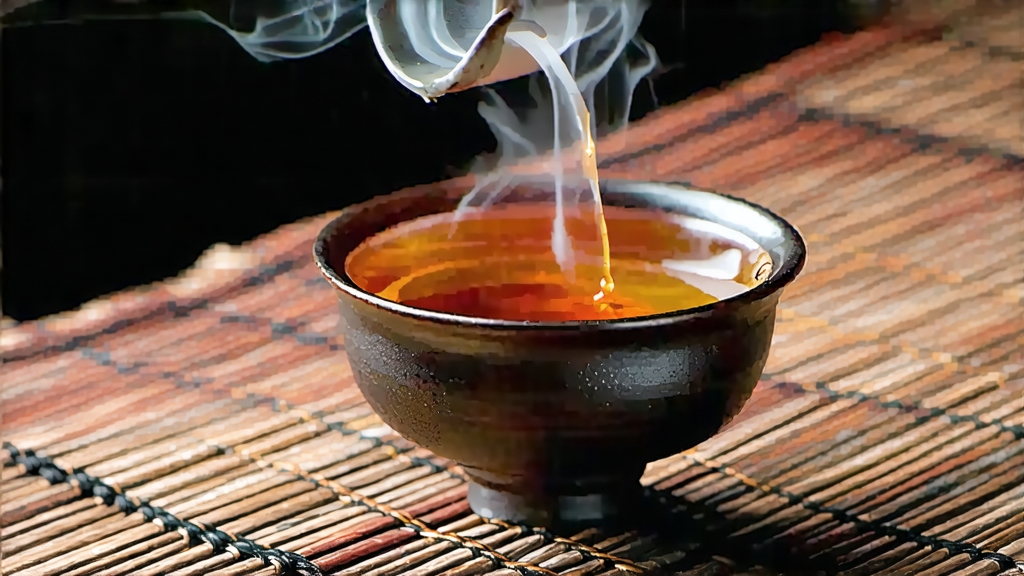
If green tea is China’s garden and pu-erh its cellar, then Phoenix Dancong is the country’s open-air concert: one leaf, a hundred fragrances, each infusion a different note. Nestled in the granite spine of Phoenix Mountain (Fenghuang Shan) in northern Guangdong, this oolong family has been singing for almost a thousand years, and international tea lovers are only now learning the lyrics.
A Brief, Legendary Past
Local chronicles credit the Song dynasty’s last emperor, Bing, with first praising the tea after fleeing Mongol troops into the mountains. Whether or not imperial lips ever touched the cup, Buddhist and Taoist monks were already cultivating wild tea trees on 1,000-metre cliffs by the twelfth century. They noticed that single trees produced leaves with wildly different aromas—ginger, jasmine, almond, even fresh-cut mango—so they began to select and propagate the most fragrant individuals. The name Dancong, literally “single bush,” commemorates this practice of keeping each aromatic phenotype separate from its neighbors.
Micro-terroir in a Single Mountain
Phoenix Mountain is a shattered granite ridge lifted above the subtropical fog belt. Day-night temperature swings of 15 °C slow the growth of the leaves, while mineral-rich runoff from weathered quartz infuses the root zone with potassium and magnesium. Add the constant cloud cover that filters UV into soft, diffused light, and the bushes respond by synthesizing an unusually high ratio of floral volatiles to bitter catechins. Within the 120 km² core zone, villages name their micro-plots the way Burgundy names climats: Wudong, Wuyi’ao, Daping, Shibi’ao. Each hamlet claims its own “fragrance type,” and blind tastings often reveal the village before the cultivar.
The Aromatic Lexicon
Growers currently recognize at least 80 distinct Dancong fragrances, but ten “classical aromas” dominate export menus.
- Huangzhi Xiang (gardenia) – creamy top notes, soft mineral finish.
- Milan Xiang (honey-orchid) – the benchmark style, lychee sweetness over basaltic stone.
- Zhilan Xiang (iris) – violet lift, cool menthol echo.
- Xingren Xiang (almond) – marzipan mid-palate, toasted rice tail.
- Yulan Xiang (magnolia) – lemon-peel brightness, lingering coolness.
- Tongtian Xiang (linden) – honeycomb richness, lime-blossom nose.
- Youhua Xiang (pomelo flower) – grapefruit pith, slight bitterness that cleanses.
- Jianghua Xiang (ginger flower) – warm spice, candied ginger finish.
- Moli Xiang (jasmine) – night-blooming intensity, silky texture.
- Rougui Xiang (cassia) – cinnamon bark, baked apple sweetness.
These are not flavor additives; they are the leaf’s endogenous chemistry, coaxed into expression by soil, altitude, and human fire.
From Leaf to Song: Crafting Phoenix Dancong
Harvest: Only the middle three leaves and the bud are plucked, usually in late April when the morning fog is still thick. Bushes are picked one at a time, ensuring that each Dancong type remains isolated.
Solar Withering: The leaves are spread on bamboo screens outside the tea shed for 20–40 minutes, depending on cloud thickness. The goal is to lose about 10 % moisture while initiating enzymatic conversion of fatty acids into floral lactones.
Indoor Withering & Shaking: Inside, the leaf is rested, then gently tossed in rattan trays every hour for up to 12 hours. Edge bruising triggers oxidation, but the center stays green, creating the half-ball shape typical of oolong.
Oxidation Control: Tea masters sniff the bruised leaf every 30 minutes; when the aroma shifts from grass to ripe peach, oxidation is halted. For honey-orchid styles, 30 % oxidation is common; for gardenia types, only 20 %.
Kill-Green: A 230 °C drum roaster fixes the aroma in 3–4 minutes, leaving the leaf flexible enough for rolling.
Rolling & Shaping: The hot leaf is wrapped in cotton cloth and rolled into tight strips, then untwisted and re-rolled up to three times to establish the dragonfly-wing